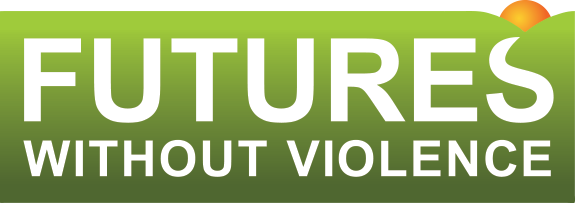Why Middle School Matters- new
Middle school is a critical time for kids. They begin to see themselves and their relationships with others in new ways—shaped by a unique set of influences and changes that arrive in their lives.
We all know how critical these years are for young people’s development, and yet we often find ourselves unsure of how best to guide kids through them. We know that we can do more and do better. And if we succeed, we can ensure that our young people leave middle school with the building blocks for a lifetime of healthy relationships.
Many youth explore romantic relationships—and even start dating—for the first time between the ages of 11 and 14, but healthy relationship conversations and education often don’t begin until much later.
If we act early to educate our young people and engage them in conversations about healthy relationships, rather than react to unhealthy ones later on, we stop teen dating violence before it starts.
If we successfully educate and empower our middle schoolers, they will take their healthy relationship habits into high school and beyond, and transfer them to friends and family.
Let this site be your resource for building healthy relationships and preventing teen dating violence in your community. The tips, tools and case studies on this site will be helpful to anyone who is helping to shape how young teens see themselves and each other. No matter who you are, what you know, where you work, or where you live, you can make a difference.
The Problem
Teen dating violence and abuse is a major public health problem in our society–consequences go beyond damaged self esteem, poor school performance, and limited growth potential. Dating violence can also put young people at risk for serious long-term health consequences. Research has shown that teen dating violence is predictive of more serious abuse in later relationships, heavy drinking, drug use, smoking, depression, eating disorders and suicidal thoughts, as well as a number of chronic health problems.
Jump Menu
What Research Show
Middle Schoolers Are Dating
Prevention Work
Getting Started
What Research Shows
Early adolescence can be difficult. Rapidly advancing brain science tells us that middle school is a pivotal period of social and emotional learning. At the same time, young teens are experiencing significant emotional, psychological and physical changes.
As tough as they may be, these years turn out to be a major window of opportunity for influencing the development of young teen’s brains and, in turn, their behavior. There are many ways to attempt to influence teens during this important time, but as the research here shows, some are far more effective than others.
Key Facts about the Early Adolescent Brain
- In early adolescence, developing brains are highly plastic—meaning they are highly changeable. They have both increased capacity to adapt and learn new skills, and an increased vulnerability to certain disorders (like depression, substance abuse, and eating disorders), many of which begin or intensify during adolescence. [Source]
- Young teens’ brains are still in the earliest stages of developing the structures needed for executive functions, which include planning ahead, weighing risks and rewards, and being able to simultaneously consider multiple sources of information. [Source]
- In the first half of adolescence, the brain’s response to reward is heightened, but its response to harm and its ability to self-regulate are still relatively immature. This makes young teens highly responsive to positive reinforcement but not to consequences or punishments. [Source]
- When kids reach adolescence, they become very motivated by the desire for approval and positive reinforcement by their peers. The evidence suggests that female brains are more affected by the outcome of these peer interactions—especially those that are either very positive or very negative—during adolescence than their male peers. [Source]
Resources
Middle Schoolers Are Dating
For teen dating violence prevention to be effective, it must begin before kids start dating. Research shows that many young teens begin dating in some form as early as middle school.
Research Shows
The findings of a recent study reveal that many 7th-graders are dating, and that many also are witnessing or experiencing dating violence.
According to the study:
- Three in 4 seventh graders surveyed said that they had a boyfriend or girlfriend.
- More than 1 in 3 reported being a victim of psychological dating violence in the last 6 months.
- Nearly 1 in 6 reported being a victim of physical dating violence in the last 6 months.
- Nearly 1 in 3 reported being a victim of electronic dating aggression in the last 6 months.
- One in 3 students surveyed reported having witnessed boys or girls being physically violent to persons they were dating.
1,140 students surveyed, racially and geographically diverse sample. Mean age of 12.
Resources
Get more facts about the prevalence of teen dating violence and its consequences:
Robert Wood Johnson Foundation Factsheet: Teen Dating Violence and Abuse
The Facts on Tweens and Teens and Dating Violence
The Connection Between Dating Violence & Unhealthy Behaviors
Emerging Issues Facing Tweens & Teens
Literature Reviews
Teen Dating Violence: A Literature Review and Annotated Bibliography, 2011, DOJ
Dating Violence Literature Review, 2010, FWV
Research
Prevention Work
Prevention in middle school matters. Middle school is a critical window of opportunity to teach kids about healthy relationships and prevent teen dating violence. Rather than repairing damage later on, communities can help equip young people with the skills they need to develop healthy relationships throughout their lives.
Prevention needs to be a priority. Parents, caregivers, teachers and others that support middle school youth can all help young teens navigate new dating relationships (both online and offline), by educating ourselves on the issues, and talking to middle schoolers about what is healthy and what is not.
Middle schoolers are just beginning to date and to explore what it is like to be in a relationship. And these first relationships set the stage for their future. Studies show that child abuse and early dating violence are both highly predictive of dating and domestic violence later on.
Research Says
The findings of an evaluation conducted by RTI International on behalf of the Robert Wood Johnson Foundation and Blue Shield of California Foundation, reveal that prevention does work and can have lasting effects.
The evaluation’s sample consisted of 1,517 students from eight schools at four waves: Wave 1 (fall 2010 of Grade 7); Wave 2 (spring 2011 of Grade 7); Wave 3 (fall 2011 of Grade 8), and Wave 4 (spring 2012 of Grade 8).
When measured against comparison schools, students after Waves 1 and 2 (short-term) reported:
- Less acceptance of teen dating violence
- More positive attitudes towards gender equality
- More parent-child communication about relationships
- More support and satisfaction in their romantic relationships
In the longer term, more than a full year later, students at Start Strong schools (as compared to those at comparison schools) still reported:
- Lower acceptance of teen dating violence
- Better attitudes towards gender equality
Resources
- Robert Wood Johnson Foundation’s Start Strong Evaluation
- Prevention in Middle School Matters: A Summary of Findings on Teen Dating Violence Behaviors and Associated Risk Factors Among 7th Graders
Getting Started
No matter where you are starting along the pathway to prevention, here are a few important questions to consider:
- What’s already going on in my community?
You can make the most of the resources you have by teaming up with others in your community who are already doing similar work. Promoting healthy teen relationships can bring together the people who live, learn, work, and play in your community. (Think health programs, school health curricula, youth development programs, domestic violence groups, parents’ groups and arts organizations.) - How can I weave culture and community into my program?
Are there cultural or community events that regularly bring people together? Think about ways you can infuse your work with the uniqueness of your community and what makes it special. - How will youth be involved in shaping what I do?
Having youth at the table is crucial. They know what resonates with their peers, and they have the power to change the dynamic among youth in the community. Ask yourself if you have the capacity to give youth a real voice, not just a token seat at the table. - Who are my champions?
Identifying the right, passionate advocates in a broad array of places will ensure that your work is sustainable and broadly supported. - How does school fit in?
Schools are a logical place to reach 11-to 14-year-olds, particularly in the classroom. Listen to local district and school staff to find the best way to incorporate healthy relationship curriculum and policies into schools. - How can I include all of the different kinds of people that influence preteens’ lives?
Visit the Influencers section of this site for guidance on who to think about including, why they’re important, and how to best reach them.


